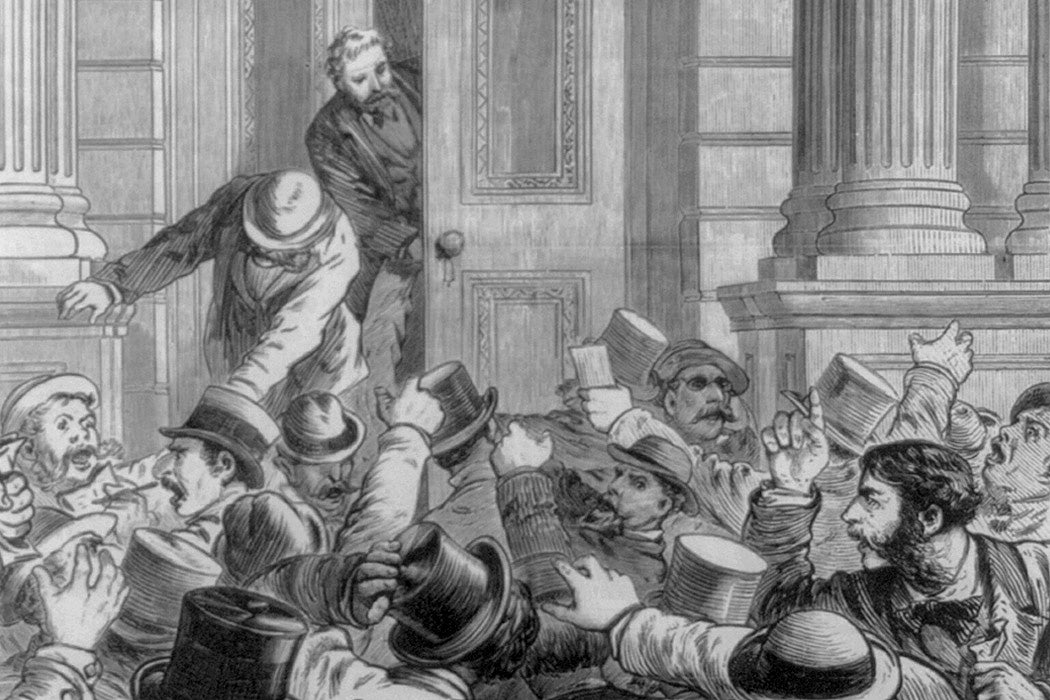The incoming Democratic majority in the House of Representatives is poised to push back against the Trump administration’s rollback of financial regulations, reflecting disagreements about how much risk is good for the economy. That’s an issue that first became salient for Americans in the mid- to late-nineteenth century, as historian Jonathan Levy writes.
The word “risk” took on a new meaning in the mid-nineteenth century. Prior to 1840, Levy writes, it was a technical term related to insurance contracts, rarely used in any colloquial sense. But, over the decades that followed, it became a common way of understanding the interactions between individuals and the growing economic markets.
In the nineteenth century, Americans saw farm life as basically stable, despite the threats of drought and commodity gluts. In contrast, work and investment in the growing urban, industrial world was subject to the constant threat of bankruptcies, layoffs, and financial panics. But the economy was transforming radically. In 1800, ninety percent of the United States population worked in agriculture. In the 1880s, that number fell below fifty percent. Meanwhile, the percentage of the national wealth held in farm property dropped from fifty percent in 1850 to twenty-five percent in 1880.
Of course, the other great economic change during this period was the end of slavery. Levy writes that proslavery theorists painted the master-slave relationship, like the farming life, as a secure, customary economic institution, while abolitionists were the clearest advocates of “freedom as risk taking.”
As risk became central to economic life, Levy writes, a common phrase took hold of the American imagination: “Freaks of fortune.” These were events, for good or ill, so unexpected that they defied the usual moral stories about hard work and wise decision-making. Narratives of these freak events often followed an “anti-Horatio Alger plotline.” A bankrupt railroad could wipe out a hard-earned nest egg that a family invested in stock. A struggling worker who spent his last dollar on a financial speculation might gain a fortune.
Get Our Newsletter
Americans began to tame the freaks of fortune in the late nineteenth century. The advancement of probability science helped the insurance industry to expand. The total value of personal insurance in the country rose from $2 billion in 1880 to over $10 billion in 1900. But booms and busts remained a devastating force until the 1930s, when the federal government stepped in with macroeconomic policy and the creation of welfare state programs like Social Security.
Ultimately, Levy writes, the risks of the Gilded Age occupied a brief moment “between the passing of a land-based economy and the triumph of a welfare economy.” But, as the modern debates suggest, the question of risk remains a key point of contention in American politics.







